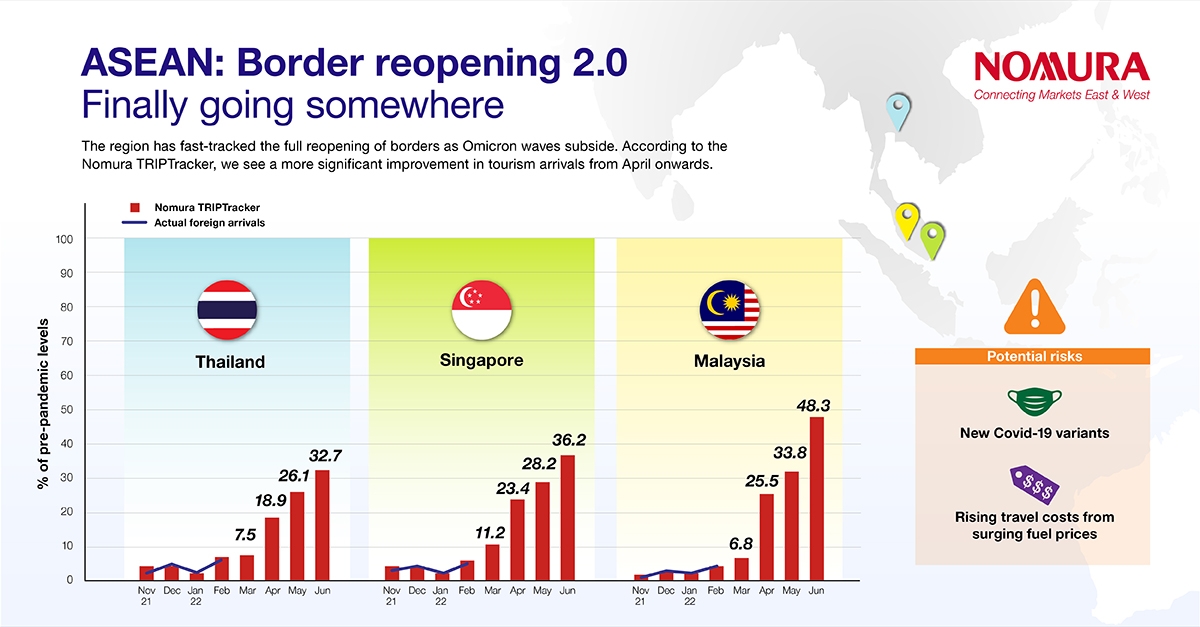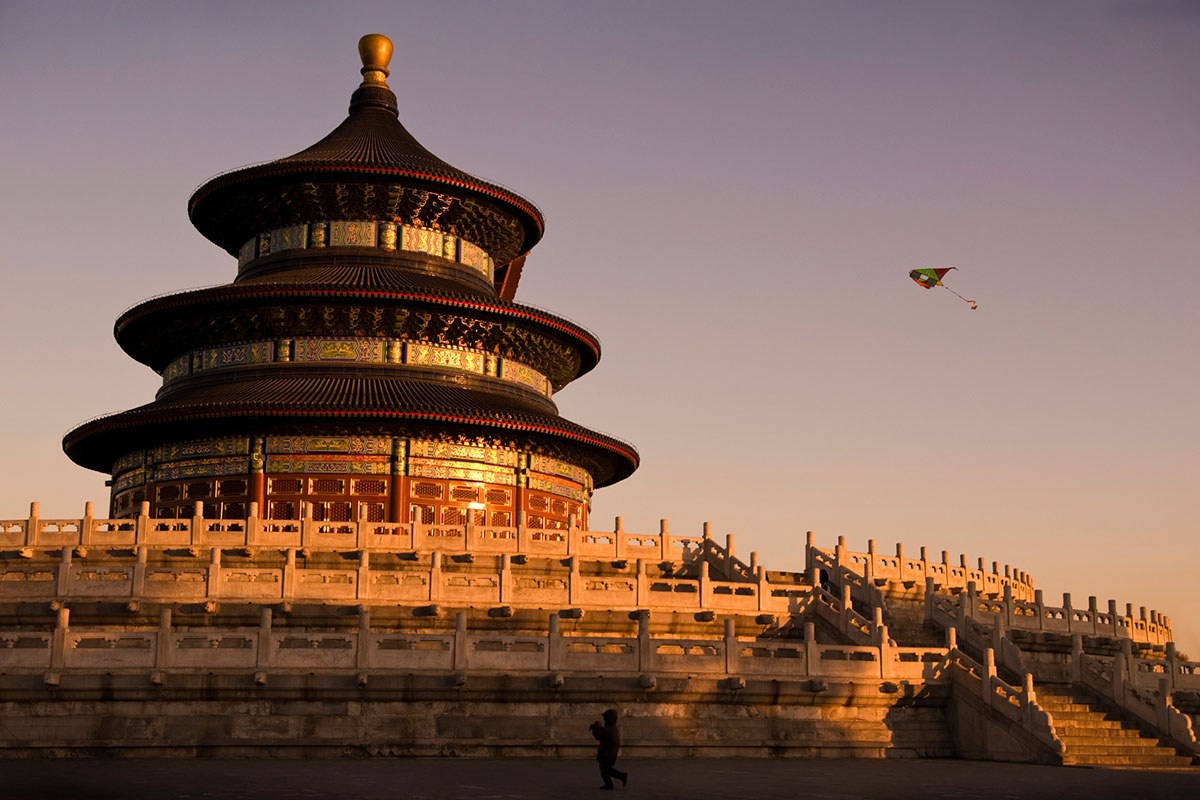As concerns around the Omicron variant subside and Covid-19 restrictions ease, governments across ASEAN have started to take more significant steps towards treating the virus as endemic and fast-tracking border re-opening. The region’s tourism recovery is finally at a turning point after the slow pick-up in foreign visitor arrivals over past months.
The Nomura TRIPTracker – which helps measure the pace of pick-up in international arrivals, factoring in full vaccinations rates, the degree of openness and travel restrictions in source and destination countries – points to a strong improvement from April 2022, despite headwinds from new Covid-19 variants, China’s zero-Covid strategy and the Russia-Ukraine conflict. The border re-opening in the region has also coincided with surging oil prices, which could add to travel costs.
With still relatively cumbersome travel restrictions, Thailand seems most at risk of underperforming TRIPTracker improvements in the coming months. On the flip side, if these issues are resolved, Thailand would stand to benefit the most.
For Thailand, we raise our full-year 2022 tourist arrivals forecast to 6.5 million, which is still only 16.4 percent of 2019 levels, and for Malaysia, to 8.3 million, 32 percent of pre-pandemic levels. For Singapore, we maintain our projection of 5 million tourist arrivals, 26.1 percent of the pre-pandemic levels in 2019.
Overall, we remain most upbeat on the growth prospects of Singapore and Malaysia, due to borders reopening and the high vaccination rates in these countries. The scope for laggard sectors such as travel and tourism to catch up is also large given their contribution to the economies of both countries and how far below pre-pandemic levels they are in terms of output.
In Thailand, we turn less cautious on growth, given the contribution of tourism, which is expected to improve later in the year.
For an in-depth analysis of factors affecting ASEAN border re-openings, read our full report here.








